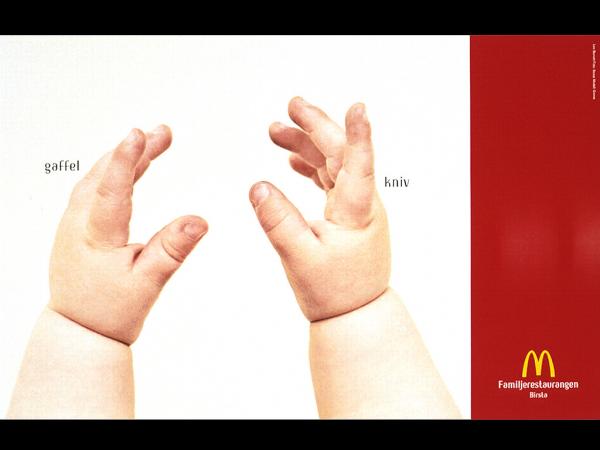Max the Knife

When it comes to hamburgers, McDonald’s reigns supreme throughout the world. You’d be hard-pressed to find a brand as well established or with the market penetration of the Golden Arches anywhere where capitalism even sniffs. There is even one in Iraq.
But by most accounts, there’s still one part of the world which has kept Mickey D’s in second place in the hamburger selling business. That place is Northern Sweden, and part of the reason why, ultimately, is plastic.
In 1968, a man named Curt Bergfors opened a hamburger joint named Max Hamburgers in Gällivare, Sweden, a town of 8,500 (as of 2010) just inside the Arctic Circle. (Here’s a map.) While the name may be somewhat evocative of the multinational burger giant hailing from the United States, Max Hamburgers beat McDonald’s to Swedish gullets by five years. And regardless, the chain stayed mostly in Northern Sweden until the 1990s. That’s when it began its nationwide expansion. Today, there are roughly 80 Max’s in Sweden compared to about 225 McDonald’s.
But McDonald’s expansion across Sweden’s cities was long-fought. Some of that is attributable to Max’s loyal fan base, of course. As recently as 2007, McDonald’s has found itself struggling to compete with the hometown hamburger flippers, shuttering a few locations due to Max’s competition. But even before that, McDonald’s was dealing with a cultural issue: many Swedes (and for that matter, many Norwegians), especially those in the north, didn’t eat hamburgers the way the rest of us do.
They used a fork and knife.
To some, this may be odd, at best. (If you’re familiar with New York City politics, for example, you probably heard of the “scandal” that struck the city in January of 2014 when new mayor Bill de Blasio dared to eat a pizza with a fork and knife.) But to McDonald’s, it was a big business problem. Max Hamburgers in Northern Sweden provided plastic utensils to its diners; McDonald’s was ill-equipped to do so. And this was a cultural battle. Curt Bergfors’s son, Richard (who is now the CEO), in a 2009 interview discussing Max’s expansion into the Saudi Arabia, addressed the question directly (original Swedish here):
How do table manners work in Saudi Arabia? Do Arabs eat hamburgers with their hands, or do they do what one does in Norrbotten and use a knife and fork?
“I’m a little uncertain about that. At this point, the utensil border runs just north of Umeå. South of there, it’s a little more uncivilized, and hamburgers are eaten with the fingers, so therefore, I assume that the Saudis would also eat hamburgers with their fingers,” says Richard Bergfors.
So McDonald’s tried to change the culture — starting with an ad campaign. The image above is an ad which ran in parts of Sweden starting in 1998. Even if you don’t speak Swedish, you can still probably figure out what the right hand is labeled — “kniv” translates to “knife,” of course. “Gaffel” means “fork.” The ad aims to teach Swedes to use their hands instead of their utensils when picking up a Big Mac — not only is it okay, but it’s expected.
The ad campaign worked too — at least, in some areas. One recent visitor to a Max Hamburgers in Stockholm recounted on his blog that “Max does have one thing in common with its American fast-food counterparts: you eat its burgers with your hands.” But while a lot of Swedes are now okay with forgoing the fork and knife, the ones in Northern Sweden are still favoring Max Hamburger. Max’s is still regarded by some metrics as the top burger chain in the region — one of the few places where McDonald’s comes in second.
Bonus Fact: McDonald’s foray into Sweden has also empowered it to earn some cash from neighbors in Norway. Because of the exchange rates and relatively higher standard of living in Norway, the prices of Big Macs were dramatically different. So the Swedish McD’s decided to take to the billboards once again, this time with a campaign focused on the Norwegian border. The ads showed that if a Norwegian crossed over into Sweden, he or she could get a Big Mac for about 50% less. But don’t fool yourself into thinking that’s a great deal. In Sweden, the Big Mac would cost you 59 krona — that’s about $8.75 for the burger. But at least it’s cheaper than the 89 Norwegian krone across the border — that’s about $14.40.
From the Archives: McMansion: A McDonald’s so fancy, they should let you use the good silverware.
Related: Hamburger forks, kind of.
